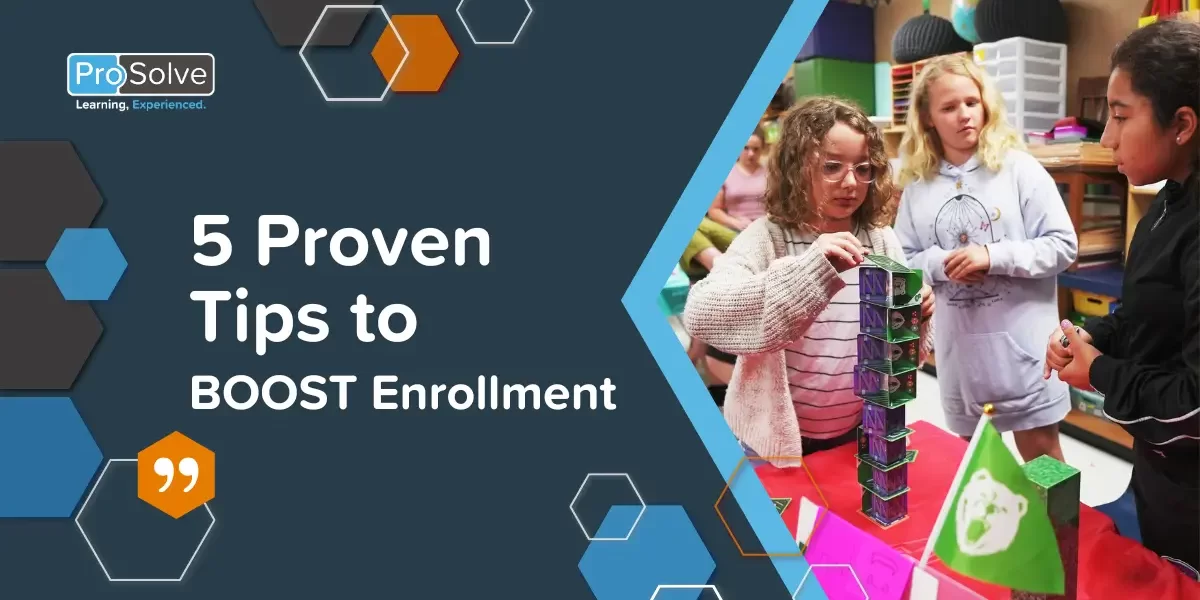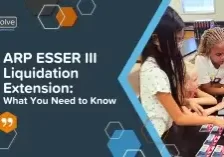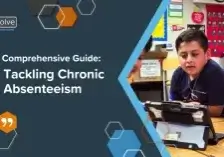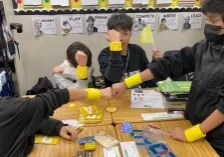5 Proven Tips to Boost Enrollment in Your Extended Learning Program

Are you looking for ways to increase student enrollment in your extended learning programs? As a leader in this field, you know the importance of out-of-school time for students to continue their learning, explore new interests, and develop important skills. However, attracting students to these programs can be a challenge.
That's why in this blog post, we'll be sharing proven strategies that can help you attract more students to your extended/expanded learning programs. By implementing these tips, you'll be able to create a dynamic learning environment that inspires and engages students in their educational journey. So let's dive in!
Tip #1: Offer Unique Learning Opportunities to Meet Every Student's Needs
One of the most effective ways to attract students is to offer unique and engaging learning opportunities. Consider offering programs in a variety of categories. We’ve included a few options below to explore.
SEL
SEL is essential for students to develop healthy identities, manage emotions, build relationships, and make responsible decisions. Adding SEL to your extended learning program helps students achieve personal and collective goals while fostering empathy for others.
STEAM
If programs want to foster a child's creativity while developing critical thinking and problem-solving skills, STEAM programs are an excellent option. They combine the arts with STEM subjects and are designed to make learning fun and engaging.
Game-Based
Strategy games can be adapted for educational purposes, where students work together to solve puzzles and challenges related to a particular topic or subject. This can be a fun way to reinforce learning and encourage teamwork.
Outdoor Adventures
This can include activities such as hiking, rock climbing, camping, and general movement outdoors. These physical activities can help students build confidence, develop teamwork and leadership skills, and learn to appreciate nature.
When selecting programs within each category, look for high-quality options that align with your goals and meet the needs of your students. A program partner should strive to provide both fun & engagement AND rigor.
If you want to dive deeper into this topic, check out our post below on the 7 ingredients for a highly engaging and high quality extended learning program.
Tip #2: Promote Your Program Effectively to Attract Students and Keep Families Engaged
Promoting your extended/expanded learning program effectively is crucial for increasing student enrollment and keeping families engaged. Without effective marketing, families may not be aware of the program's existence or the benefits it offers. To ensure that your program reaches the right audience, you'll need to use a variety of channels and tactics.
Tip #2: Promote Your Program Effectively to Attract Students and Keep Families Engaged
Promoting your extended/expanded learning program effectively is crucial for increasing student enrollment and keeping families engaged. Without effective marketing, families may not be aware of the program's existence or the benefits it offers. To ensure that your program reaches the right audience, you'll need to use a variety of channels and tactics.
Start with Empathy
Spend time empathizing with your audience to understand which benefits to highlight for your program. These might include academic enrichment, social-emotional learning, or access to unique learning opportunities. By emphasizing these benefits, you can help students and families understand why your program is worth their time and investment.
Where to Promote Your Program
Now that we know which benefits matter most to students and families, it is time to promote your program! There are numerous options including but not limited to email/newsletter, on-site (formal and informal), dedicated landing page, PDF flyer, videos, text, and social media.
One last consideration is to create versions in multiple languages so that your program’s benefits can be made available to all families that your district serves.
Tip #3: Provide a Safe and Supportive Learning Environment
Ensuring a safe and supportive learning environment is crucial in any extended learning program. By creating an environment that fosters a sense of belonging and positive relationships among students, your program can create a space where students feel comfortable learning and expressing themselves. This not only helps to increase student engagement but also promotes positive social and emotional development.
One way to promote a safe and supportive environment to encourage positive relationships among students. This can be done by providing opportunities for team-building activities, small group projects, and other collaborative learning experiences. By promoting positive relationships among students, you can help create a sense of community within your program.
Actionable Tip: Get inspiration on some team-building activities with this free resource.
By providing a safe and supportive learning environment, you can help ensure that all students have the opportunity to learn and grow. If learners feel supported with a strong classroom community, they will tell others about why they love your program!
Tip #4: Offer Incentives
Incentives can be a powerful tool to motivate students to enroll and participate in your extended learning program. By offering incentives, you can increase student engagement and create a sense of excitement around your program.
There are many different types of incentives that you can offer to students, such as prizes, recognition, and special privileges. For example, you could offer students who complete a certain number of hours in your program a certificate of achievement or a special prize.
Tip #5: Collaborate with Partners to Build Community and Boost Enrollment
Collaborating with community partners can also help increase student enrollment. Partnering with local businesses, nonprofits, and other organizations can provide access to resources, expertise, and new audiences. Additionally, partnerships can help raise awareness of your program and build trust with the community.
Identify Potential Community Partners
Start by identifying local organizations, businesses, and individuals who could be potential partners for your program. This can include non-profit organizations, libraries, museums, and community-based organizations that share your program's goals.
Build Relationships with Partners
Once you have identified potential partners, it's important to build relationships with them. This can be done through regular communication, networking events, and collaboration on small projects to build trust and establish a shared vision.
Promote Partnerships to Raise Awareness
Use social media, community events, and other communication channels to promote your partnerships and raise awareness of your program. This can help to build credibility and attract more community partners and students to your program.
Putting These Tips into Practice
Attracting students to extended learning programs can be challenging, but with the right strategies, it is possible to increase enrollment and create a dynamic learning environment that engages and inspires students.
By offering unique learning opportunities, collaborating with community partners, promoting your program effectively, providing a safe and supportive learning environment, and incentivizing learners, you can create a program that meets the needs of your students and families.
At ProSolve, we are committed to supporting extended learning programs with our wide range of resources and tools. From marketing materials and incentive programs to team-building activities and SEL resources, we are here to help you create an engaging and effective extended learning program.
Free Team Building Activities:
Bring The 4 Cs Into Your Classroom
Engage your class with these ready-to-use, 20-min challenge activities that help build community in your classroom.




